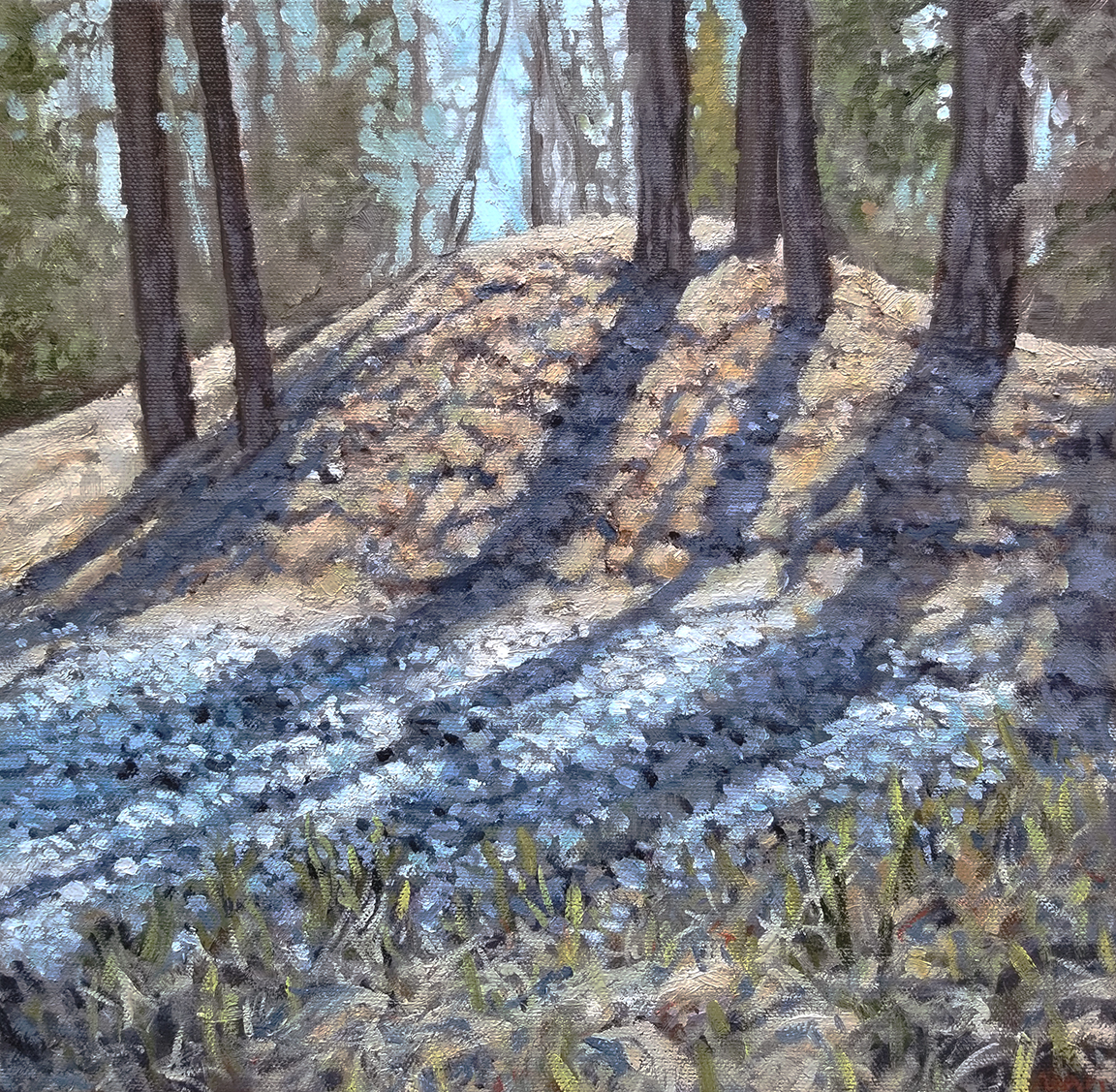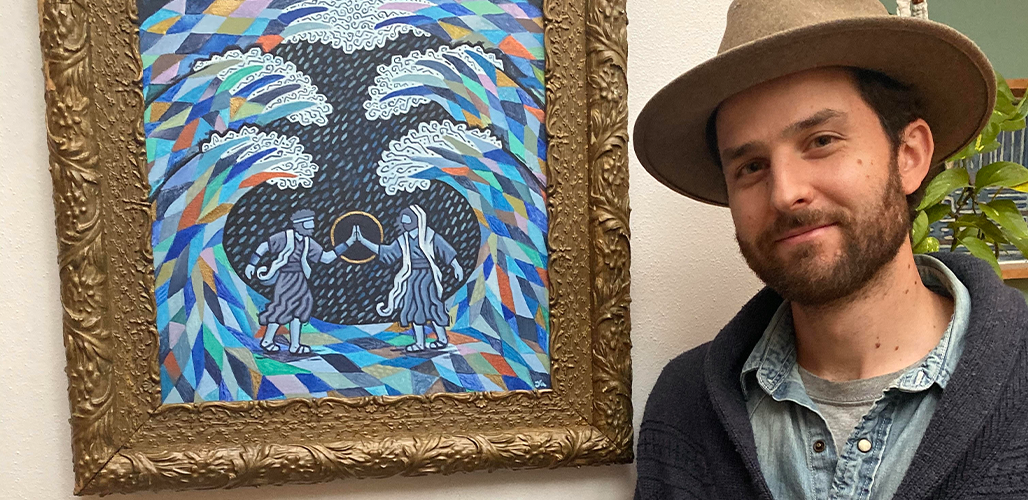
Keeping it Simple and Easy
Mixing colors is something that every artist has to do at some point. As an oil painter, I find it to be one of the most important elements that has to be done right to get good results with my artwork. There was a time when I was oblivious to it, then a time when I realized the significance and challenge of it. Now, I mix my colors with much more confidence, and you can, too.
I have 3 easy and strong strategies that will help you get the best results from your color mixing, whether you mix your paint before or during your painting practice. These are the most basic and effective strategies for mixing colors, so don’t be surprised if you think it sounds too simple.
You will not have to learn complicated color theory concepts. While those can be incredibly helpful in the long run, I want to help you get the most bang for your buck in the shortest amount of time. You can implement these strategies with any form of art that uses color pigment, whether it is acrylic, oil, watercolor, gouache, or any other medium that will allow for the tiny pigment particles to mingle and party together.
A quick note regarding these strategies: they can work simultaneously. However, I have divided them out into a process that prioritizes the most important elements of color. With enough practice, it won’t be long until you’re using these strategies in unison when mixing colors.
We will start by establishing the 3 central concepts that make up color. It is important to give these some good attention, because understanding them will be integral to mixing colors with confidence. Each section has tips that will expound on the simple concepts with illustrations to help guide your learning. At the end of this article, I give you a basic application of these 3 central concepts.
Let’s dive in!
Know the Value of Value

In art, “value” is the word that describes the lightness or darkness of a color. If I were painting a still life, the shadows would be considered darker values than the highlights, which would be lighter values. Everything we see around us can be defined by their values and there are a wide range of values that our eyes can differentiate between and identify.
Values help us recognize forms and differences between objects through “value contrast”. When one value sits next to another value, the differences are often very clear, especially if the values are widely different. Our eyes are incredibly attuned to recognizing values and the forms that they imply, as it is the main task of our rods and a secondary task of our cones to perceive those shifts in value.
Simply put, light shines into our environment, our eyes see the variations in illumination, and our brains recognize the objects around us, mostly so that we can navigate and understand our surroundings.
When we paint, it is vitally important that we first recognize the values of the subject we are painting. Many oil painters start with the darkest values and work towards the lightest over time. This technique can be very helpful for keeping our values straight and understood correctly. If we are true to the value relationships of our subject, it will become very clear what we are trying to represent. Remember, it’s those values that communicate the forms of the objects we are painting and we are trained to recognize objects through those forms. Therefore, realism relies upon those values.
Think about black and white photography. Even without any hue or color intensity, we can still understand what we are seeing. That is all thanks to value and the forms that are described by the shifts and contrasts between values.
To apply this to your painting process, you will want to practice seeing and recognizing how light or dark the color you are trying to replicate or create should be. If you are a representational painter, pay close attention to those values first, then move your mind towards the next two strategies as you are mixing colors. If you are an abstract painter and mixing colors, think about the contrasts that you will create through value.
Identify the Hue

Once the value of a color is observed, we can jump into recognizing the “hue”. Hue is just a fancy word for the basic color we are seeing. So, yellow is instantly recognized as a “yellow hue”, different from red, orange, blue, green, etc., based solely on its position in the color wheel and its essential family of hues. This is best expressed visually. Let’s look at the color wheel below.

Notice how it is divided up, with each section labeled. Those labels are the “hues”. They are defined as the family of colors that sit within a section of the color wheel or color spectrum. These labels are usually what we think of when we consider and talk about colors. I might say, “This is red and that is yellow.” You would understand what I mean without many, if any, questions.
When you are mixing colors, you will need to identify the hue that is most recognizable. A color that has no neutrality (“grayness”, “brownness”, or “muddiness”) is known to be a “pure” hue. When a color is very pure, the hue is far easier to identify. You still need to be careful and consider if the hue is between two hues or leaning in a certain direction. For instance, a red that you observe might lean towards red-orange or might lean towards red-violet. Knowing what the hue is doing will help you recognize the color of paint you should start with or what colors you should try mixing together.
Establishing a knowledge of the color wheel is indispensable. Break it down into sections. There are 3 “primary” hues: red (R), yellow (Y), and blue (B). These create the “secondary” hues: orange (R+Y), green (Y+B), and violet (R+B). “Tertiary” hues are those that reside between primaries and secondaries on the color wheel. These are yellow-orange, red-orange, red-violet, blue-violet, blue-green, and yellow-green. The 12 hues make up the basic color wheel that artists and designers often use to plan their color schemes and understand the working relationships between hues.
Once you understand hues, you will have a better time choosing what paint to use when mixing colors. For instance, if you want to mix a red-violet using a red paint and a blue paint, you will be better off starting with a more violet red (such as Quinacridone Red or Alizarin Crimson) and a more violet blue (such as Ultramarine Blue). If you were to mix an orangey red with a greenish blue your results would not gain you a vibrantly pure red-violet, but something more brown.

The above graphic shows popular and common pigments placed where they would belong on the traditional color wheel. This can help inform your decisions when selecting paints for mixing colors. Know that when you are mixing colors from pure pigments, you can guess what the results may look like by drawing a straight line between them on this graphic. The middle point on the line will be the average of the resulting mixture.
Knowing your hues makes it a lot easier for mixing colors. It also helps you communicate about color and even spot differences between similar colors, especially those that are “gray” or “brown”. A gray can be “reddish” or “blueish” or “greenish”, etc. Same with a brown or other neutral color. This will bring us into the next section.
Mixing Colors with Intensity

Colors cannot be defined only by value and hue. There is an element that speaks to the vibrancy, intensity, or chroma of a color. Intensity relates to that “pure” notion I discussed earlier. A color that is high in intensity will be very vibrant and close to its pure hue. We see that in the flowers shown above, as they radiate pure hues of red, red-orange, and yellow.
Many colors we see do not fall within easily-defined hues. They are lower in intensity and, therefore, harder to associate to a pure hue that they are derived from. These kinds of colors can be known as neutral or muted colors. What do we do with those?
When confronted with a neutral color, it is important to identify what hue the color is closest to. Then we can create a plan for mixing colors. For example, if a neutral color is reddish (often described as “warm”), we want to start there, then introduce paint colors that will bring our mixture closer to the observed color.

There are many ways to neutralize a hue, but different approaches get different results.
If you want the neutral color to retain some of its intensity (not becoming too faded, but remaining strong in color), you need to introduce its “complement”. The complement of a hue is the hue on the opposite side of the color wheel.
As an example, red would be neutralized by green. Introducing just a little green will result in a reddish-brown. The green can either be one distinctly green pigment or the combination of pigments, such as yellows and blues. The less green we introduce, the more red our brown will be, and the more we introduce, the more green it will be. We can also try to introduce more blue or yellow, depending on if we need to pull or push the color in a different direction.
Mixing colors can feel very confusing at first! I know a lot of students that I have taught who really struggled initially to understand how to achieve certain colors with their paint. It really just takes some practice.
Faded or muted neutrals can also be mixed by introducing white, black, or gray. White lightens your hue, known as “tinting”. Black darkens the hue, known as “shading”. Gray desaturates your hue, known as “toning”. All three will lower the intensity of your colors, making them less vibrant. One of the most common painting errors is to introduce white as a brightener. However, while white does lighten, it doesn’t brighten (in the sense of increasing vibrancy).
Applying These Strategies

Now we understand the three basic characteristics of color: value, hue, and intensity. Every color is going to have some element of each characteristic.
How do we use this knowledge for mixing colors? I have a little rundown of how you might approach mixing colors to match your reference.
First, note the value. Is the color dark? Is it light? Somewhere in between?
Then, note the hue. Can you recognize any? Where does it lean? Compare it to surrounding hues.
Lastly, note the intensity. Would adding white, black, or gray result in the color? Or do you need to keep things more vibrant by mixing together complementary colors?
Soon, you will be making these judgments without even thinking too much. Your color recognition and knowledge of your pigments will increase, you will grow in confidence, and your instincts will gain a more solid and sophisticated foundation. Mixing colors will become completely natural.
Finally, I would recommend that you start painting with a limited palette, if only to understand how colors can interact. A limited palette is a simple selection of colors, usually a red, yellow, and a blue, along with white. Try different combinations (Pyrrole Red, Lemon Yellow, Ultramarine Blue; then Alizarin Crimson, Yellow Ochre, Phthalo Blue, etc.). Try switching out a pure primary with a neutral color (for instance, use red, yellow, and Payne’s gray instead of blue). You will start to learn, firsthand, how these colors interact and the color wheel will become alive in your mind.
Read more great color advice with James Gurney’s book “Color and Light”, found here.
If you’re interested in oil painting, read my invitation and encouragement to you here.









